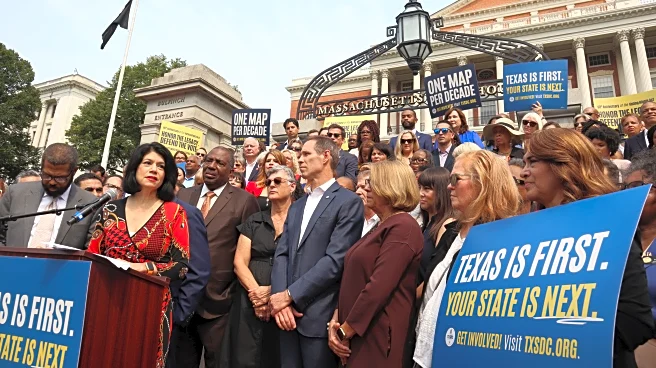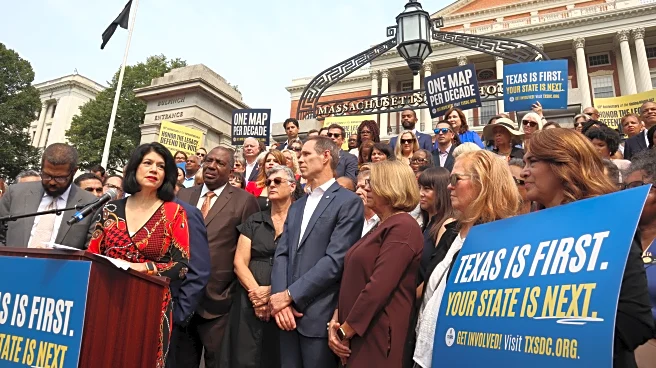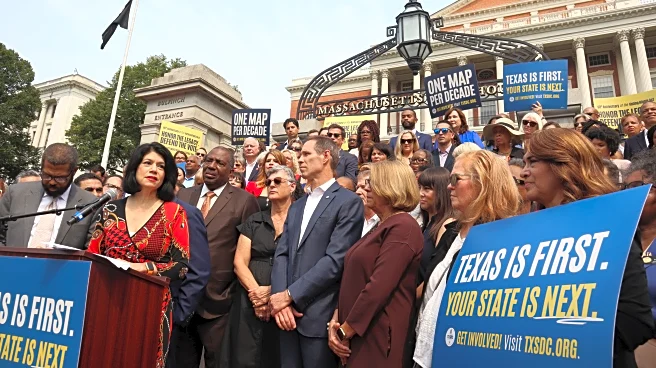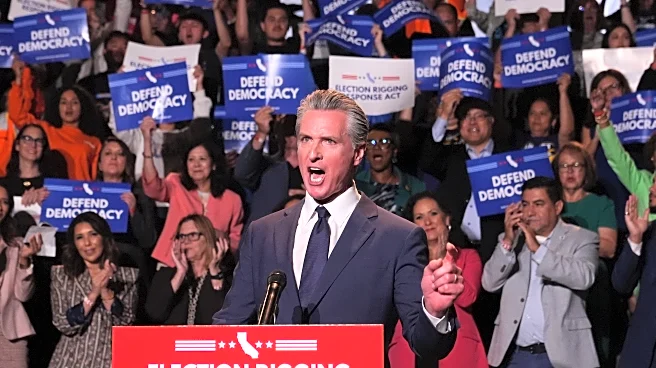What's Happening?
The Democratic Party is experiencing a generational shift in its approach to Senate candidate recruitment, as highlighted by the recent announcement of Sherrod Brown's candidacy for the Ohio Senate seat. Brown, a seasoned politician at 72, represents a strategic choice for Democrats aiming to reclaim a seat in a state that has leaned Republican in recent years. Despite calls from figures like Amanda Litman for a younger slate of candidates, the party continues to rely on experienced leaders such as Brown, Roy Cooper, and potentially Janet Mills, to lead crucial races. This strategy underscores the tension between the desire for new leadership and the practical need to field candidates with proven electoral success.
Why It's Important?
The reliance on older candidates in key Senate races reflects broader challenges within the Democratic Party as it seeks to balance generational change with electoral viability. The decision to support seasoned politicians like Brown and Cooper is driven by the need to secure victories in states critical to the party's future Senate majority aspirations. This approach may impact the party's ability to attract younger voters and energize its base, which is increasingly calling for fresh leadership. The outcome of these races could influence the party's strategy in future elections, particularly as it aims to counter President Trump's policies and regain control of the Senate.
What's Next?
The Democratic Party faces a challenging path to winning the Senate in 2026, requiring the flipping of multiple Republican-held seats while maintaining its current positions. The recruitment of strong candidates like Brown and Cooper is part of a broader strategy to capitalize on potential voter backlash against President Trump's second term. The party is also closely watching developments in Maine, where Governor Janet Mills may challenge Senator Susan Collins. The success of these candidates could set the stage for a more significant shift in 2028, as Democrats aim to build momentum and expand their influence in traditionally Republican states.
Beyond the Headlines
The generational shift within the Democratic Party raises questions about the long-term implications for its leadership and policy direction. As younger Democrats gain prominence at the local level, the party's bench in red and purple states may deepen, potentially leading to more competitive primaries and a broader range of candidates. This evolution could reshape the party's identity and influence its approach to key issues, as it seeks to balance experience with innovation in its leadership ranks.













